Our consoles’ rich history might surprise you. Inspired by one man’s incredible journey, from engineer to product designer, we take an in-depth look at the design rationale behind our Heritage Edition consoles.
The start of something
special
The original ASP8024 was designed by Audient’s cofounder and renowned designer David Dearden (of DDA & Advision Studios) back in 1997. However, David’s journey in audio started long before in 1970’s London.
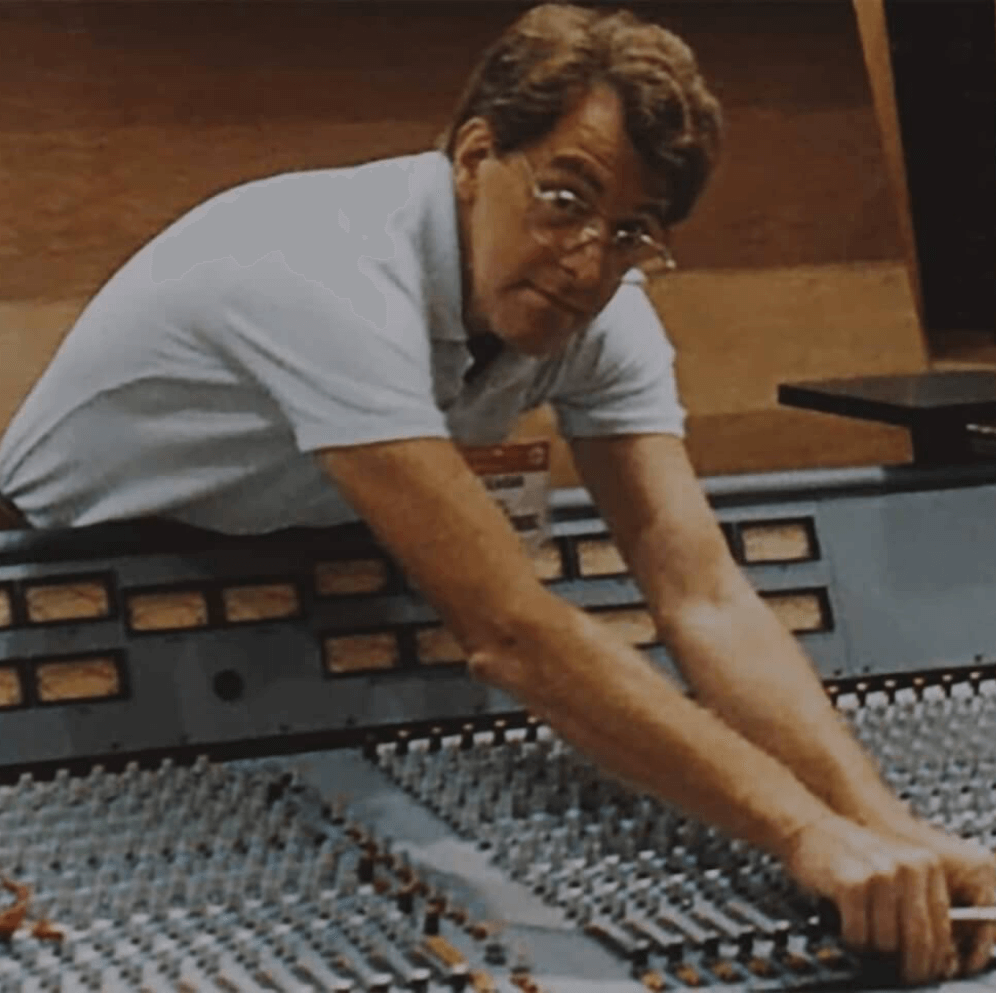
Where it began
David’s first gig as a console tech was at none other than the legendary Advision Studios. Here, David joined the team as in-house tech and engineer to specify, build and maintain equipment for the studio, with notable session clients such as Emerson, Lake & Palmer, Shirley Bassey, David Bowie and many more.
David also worked closely with John Lennon at his home studio, Ascot Sound, during the recording of John Lennon’s album ‘Imagine’. David then went on to design and build consoles for George Harrison and Ringo Starr.
“…I would go to John Lennon’s house and stay overnight… I sometimes wish I’d picked up the odd scrap of paper with lyrics scribbled on them for my retirement.”
– David Dearden, AudioTechnology 2015
So, what makes a
Heritage Edition?
Two consoles were prevalent during David’s first few years at Advision – one of British heritage and one American. The British console was largely class-A but had large amounts of high frequency phase shift (it sounded “smeary” according to David) but did have a weighty low frequency response from its large iron transformers. The American console on the other hand had clean, clear midrange with sparkle and speed, largely running class-A/B with smaller but more transparent steel/nickel transformers.

David recounts several tales of modifying the amplifiers in this U.S style console to retain smooth high frequency details and speed when using several amp stages in series within the console signal path, whilst also recounting tales of shock when measuring the phase shift in the British design! Both had their merits.
These consoles went on to inspire our custom Heritage Card, found on both the ASP8024-HE and the ASP4816-HE.
The Heritage Card
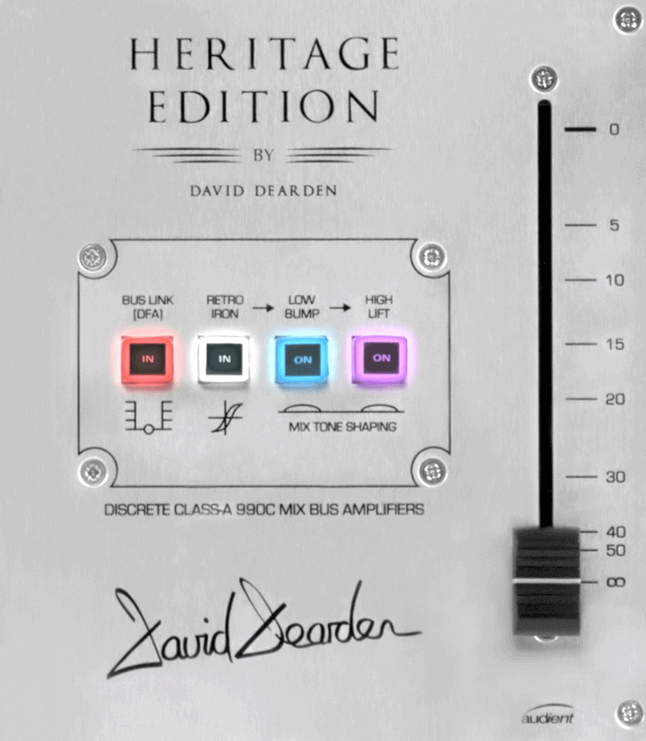
Take your mix to the next level
Retro Iron is engaged with the switches in the master fader section, and when inserted into the mix bus signal path, provides a massive headroom of +28dBu into 600Ω at the mix insert send output, perfect for driving a vintage mix bus EQ or Fairchild! You should try engaging the Retro Iron features half-way through a mix to give you a little lift!
When combined, these stages provide a punchy, weighty sound that is not murky or slow, but harmonically exciting and ever-so-slightly gritty. Perfect for adding character to your mixes, where the output transformers provide just the right growl in the lower midrange for guitars.
Operating ahead of the discrete amplifiers, there is a powerful and delicately tuned EQ that changes the energy levels delivered to the harmonic output stage to sweeten and “tilt” the response of the console to the style of music you are working on. This EQ is based upon legendary Baxandall peaking filters with broad curves, using high quality capacitors and exceedingly smooth, low distortion modern amplifiers – the LM4562.

The Mix Bus
Next up, we’ve upgraded our summing amplifiers to the renowned American John Hardy 990C amplifiers, as designed by legend Deane Jensen in the 70’s.
These discrete transistor amplifiers are the “American Muscle Car” of opamp design and offer increased dynamics, sweet spot and punch, whilst simultaneously halving the noise of the console – for example a 72CH now measures like an old 36CH!
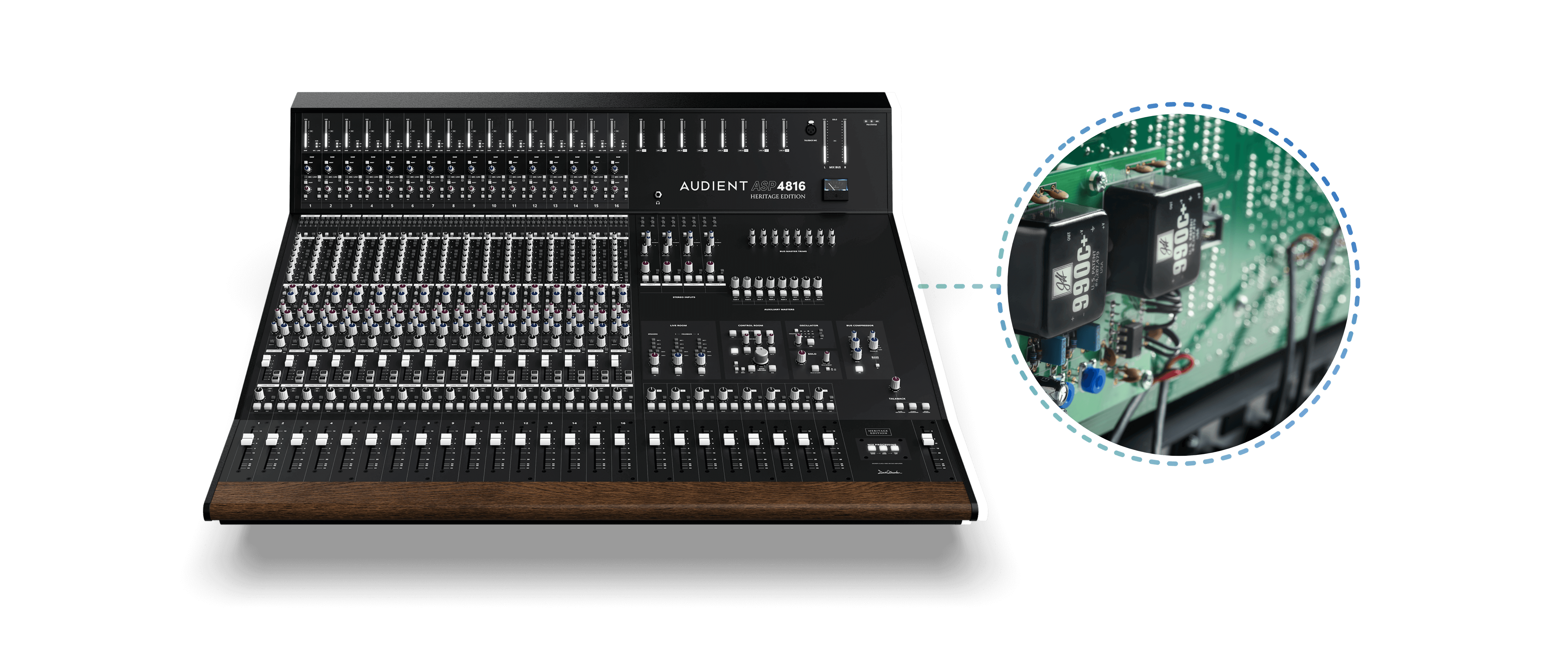
Real heritage at your fingertips

25+
Years in the making
David Dearden proudly launching the Heritage Edition at Musikmesse 2016, 46 years after starting at Advision Studios and 19 years after designing the first incarnation of the ASP8024 console – now that’s some heritage.
Our consoles’ rich history might surprise you. Inspired by one mans incredible journey, from engineer to product designer, we take an in-depth look at the design rationale behind our Heritage Edition consoles.
The start of something special

David Dearden (of DDA & Advision Studios)
The original ASP8024 was designed by Audient’s cofounder and renowned designer David Dearden (of DDA & Advision Studios) back in 1997. However, David’s journey in audio started long before in 1970’s London.
The start of something special

David Dearden (of DDA & Advision Studios)
David’s first gig as a console tech was at none other than the legendary Advision Studios. Here, David joined the team as in-house tech and engineer to specify, build and maintain equipment for the studio, with notable session clients such as Emerson, Lake & Palmer, Shirley Bassey, David Bowie and many more.
David also worked closely with John Lennon at his home studio, Ascot Sound, during the recording of John Lennon’s album ‘Imagine’. David then went on to design and build consoles for George Harrison and Ringo Starr.
“…I would go to John Lennon’s house and stay overnight… I sometimes wish I’d picked up the odd scrap of paper with lyrics scribbled on them for my retirement.”
– David Dearden, AudioTechnology 2015
So, what makes a Heritage Edition?
Two consoles were prevalent during David’s first few years at Advision – one of British heritage and one American.
The British console was largely class-A but had large amounts of high frequency phase shift (it sounded “smeary” according to David) but did have a weighty low frequency response from it’s large iron transformers.
The American console on the other hand had clean, clear midrange with sparkle and speed, largely running class-A/B with smaller but more transparent steel/nickel transformers.
David recounts several tales of modifying the amplifiers in this U.S style console to retain smooth high frequency details and speed when using several amp stages in series within the console signal path, whilst also recounting tales of shock when measuring the phase shift in the British design! Both had their merits.
These consoles went on to inspire our custom Heritage Card, found on both the ASP8024-HE and the ASP4816-HE.
The Heritage Card
Retro Iron is engaged with the switches in the master fader section, and when inserted into the mix bus signal path, provides a beastly headroom of +28dBu into 600Ω at the mix insert send output, perfect for driving a vintage mix bus EQ or Fairchild! You should try engaging the Retro Iron features half-way through a mix to give you a little lift!
There are 4 modes of “tone shaping” operation, controlled by the 3 switches on the right hand side of the master fader panel.
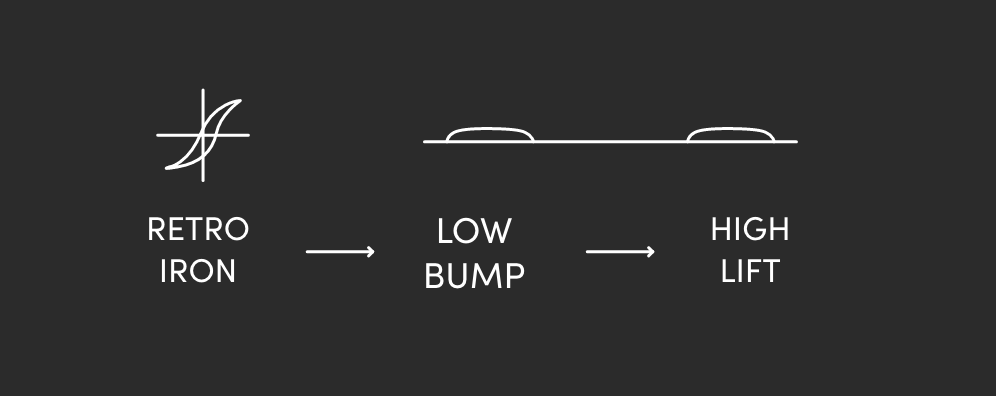
When combined, these stages provide a punchy, weighty sound that is not murky or slow, but harmonically exciting and ever-so-slightly gritty. Perfect for adding character to your mixes, where the output transformers provide just the right growl in the lower midrange for guitars.

Operating ahead of the discrete amplifiers, there is a powerful and delicately tuned EQ that changes the energy levels delivered to the harmonic output stage to sweeten and “tilt” the response of the console to the style of music you are working on. This EQ is based upon legendary Baxandall peaking filters with broad curves, using high quality capacitors and exceedingly smooth, low distortion modern amplifiers – the LM4562.
The Mix Bus
Next up, we’ve upgraded our summing amplifiers to the renowned American John Hardy 990C amplifiers, as designed by legend Deane Jensen in the 70’s.
These discrete transistor amplifiers are the “American Muscle Car” of opamp design and offer increased dynamics, sweet spot and punch, whilst simultaneously halving the noise of the console – for example a 72CH now measures like an old 36CH!
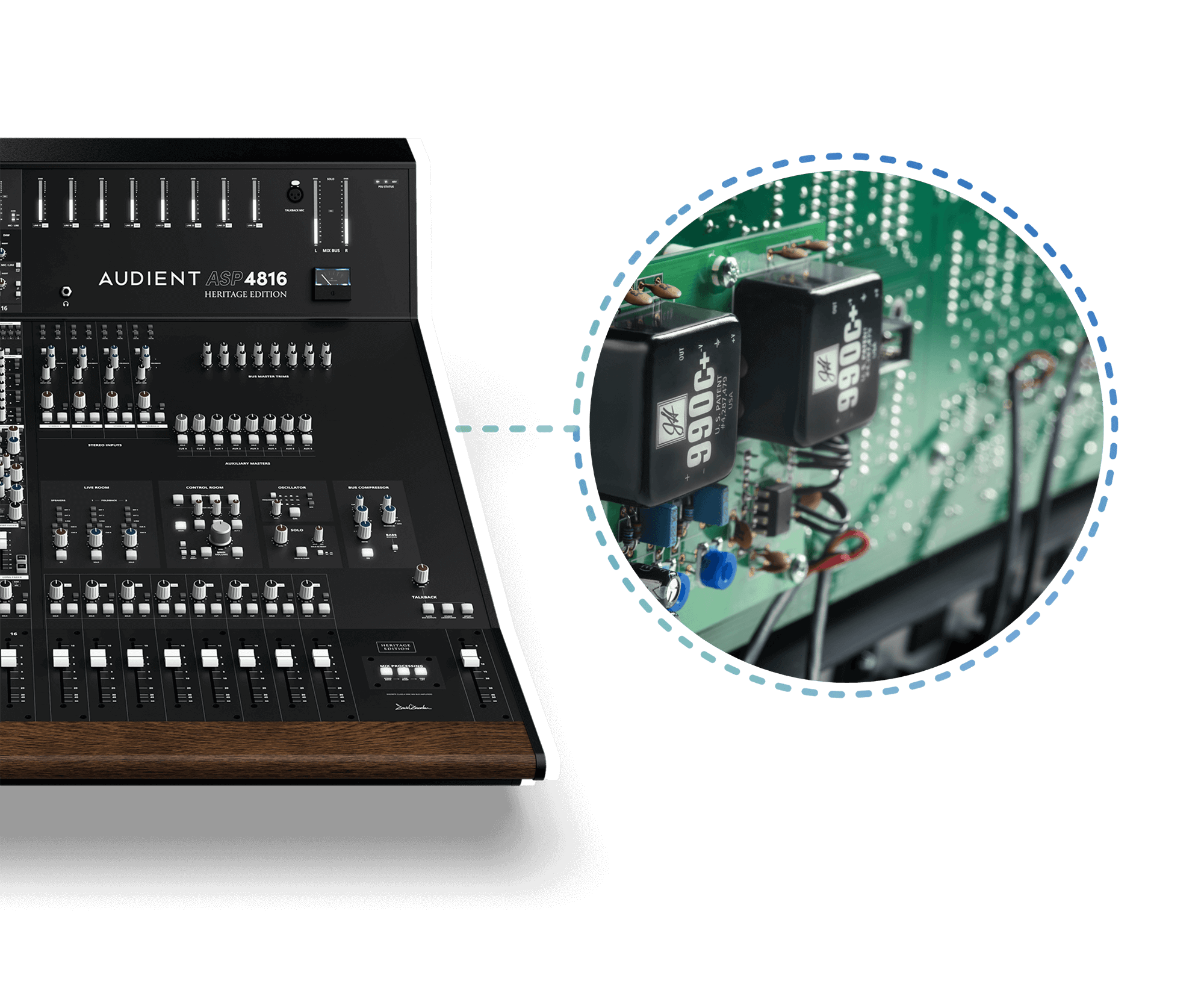
Real heritage at your fingertips
As you can see, the Heritage Edition consoles have a rich history inspired by David’s journey though the golden era of British music and beyond. Fast forward to the present day, there are now 1000’s of Audient consoles in use everyday, at home in world famous and home studios alike. Meaning when you choose an Audient console, you’re joining the audio elite.
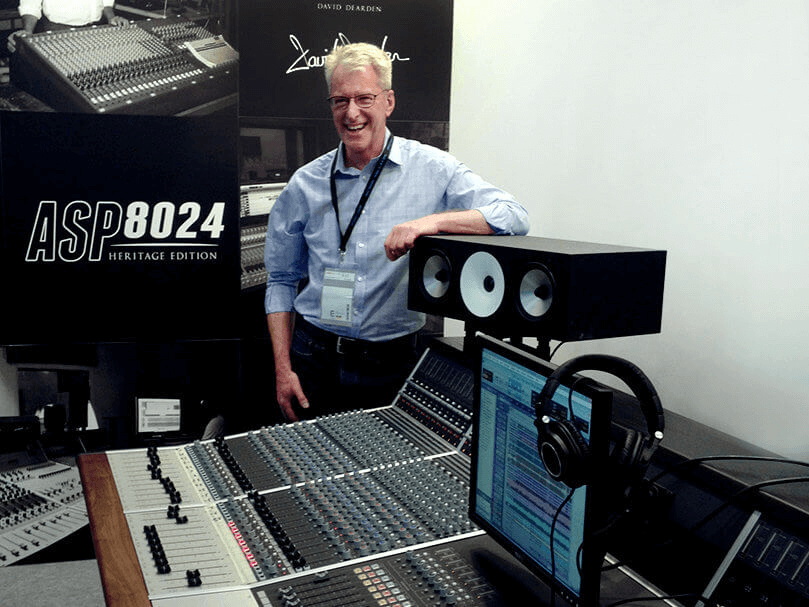
David Dearden proudly launching the Heritage Edition at Musikmesse 2016, 46 years after starting at Advision Studios and 19 years after designing the first incarnation of the ASP8024 console – now that’s some heritage.